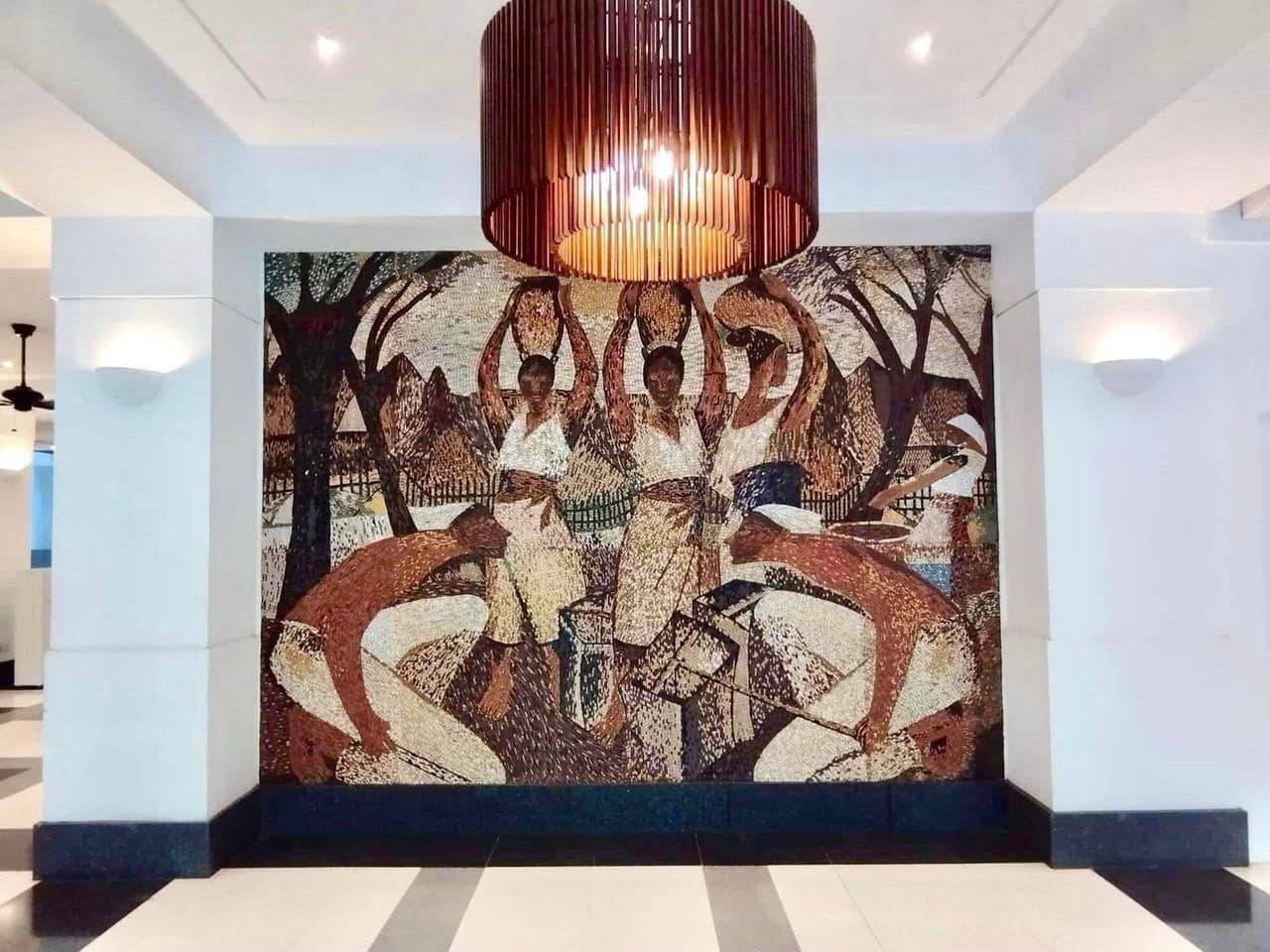They create giant artworks to feed undernourished kids

If you think making a copy of a master painter’s artwork is a daunting task, making a replica using different mediums will probably strike you as nearly impossible and one that only a fool would attempt.
Call Millie Kilayko and her team of artisans fools then. They took on the challenge of recreating an Anita Magsaysay-Ho painting using eggshells, broken ceramic tiles, and used Nespresso capsules.
That’s not a minor achievement for them, none of whom were formally educated in the arts, and most of whom are women from urban poor communities in Bacolod.
“You have to be faithful to the original, you can’t deviate,” Kilayko, president and chief executive officer of Negrense Volunteers for Change (NVC) Foundation, says about the challenge they faced with this particular piece. “And you know how hard her colors are to duplicate.”

Portfolio
Because they don’t paint over the Nespresso capsules, opting to use them as they are despite their limited colors, and because they did not have a very wide palette of ceramics either, they did not have all the colors in the original painting. This required them to be creative. For example, for a certain shade of gray, they had to use white and several shades of black together so that it would look like the right shade of gray when seen from a distance.
“I was so stressed,” Kilayko intimates. “My fear was the Magsaysays might not like it.” She was so relieved when the painter’s daughter who commissioned the piece said she was “happy” with it.
Their portfolio includes other major commissioned works, such as the two huge mosaic pieces now decorating the lobby of Citadines hotel in Bacolod. One of them is the largest they have produced yet, a 10 ft x 20 ft sepia-toned piece that hangs imposingly on a two-storey wall.

It’s not all big customized pieces. NVC also makes small decorative and functional home items such as food trays and folding tables, religious figures like crosses and angels, fashion accessories like necklaces and earrings, and Christmas ornaments that they sell in bazaars and trade fairs not just in Bacolod but also in Manila and other places.
These are the products ordinary folks know them by and through which they can support the foundation’s main undertaking—the feeding program that provides daily healthy meals to malnourished and undernourished children up to 3 years in age living in poor communities in Negros and other provinces. Each piece comes with a note containing information on how many days’ worth of free meals the purchase affords.
Of course the big mosaic pieces that come with hefty price tags feed so many more, with 100 percent of the proceeds after deduction of the artisans’ salaries go to the foundation’s feeding program. All told, NVC has been feeding at least 55,000 infants and toddlers across the nation through its Nutrition Program which is anchored on Mingo Meals, a nutritious porridge made up of rice, monggo, and malunggay to which one adds water.

Feeding program
Since the foundation started 15 years ago, it has served over 25 million Mingo Meals, which is also given as part of emergency relief during typhoons and other calamities.
The feeding program was fueled by Kilayko’s encounter in 2010 with a kid who started schooling at age 9. She wondered, “Why is he here? He’s too old to be in kindergarten,” and figured that by the time the kid reaches Grade 4, he’d be a teenager.
“What Grade 4 child would want to be among little boys?” she asked, rhetorically. “This kid is going to drop out of school. What good then are the classrooms if children can’t even get to them because they’re hungry or they can’t pay attention well because they’re not being fed adequately?”

This led to NVC creating a feeding program for children 3 years old and below, the most important stage in a child’s development when a lot of brain development, cognitive skills development, and social skills development takes place.
“No amount of improvement after the age of 3 can compensate for the lack,” she notes. “If you don’t feed a child at that most crucial stage, you lose a lot of them.”
For Kilayko, who is one of Inquirer’s 38 Women of Power for 2024, art is just a means to an important end. “Helping people craft their dreams, linking dreams to donors, and donors to dreams. This is what gets me up every morning, raring to start my day.”

















